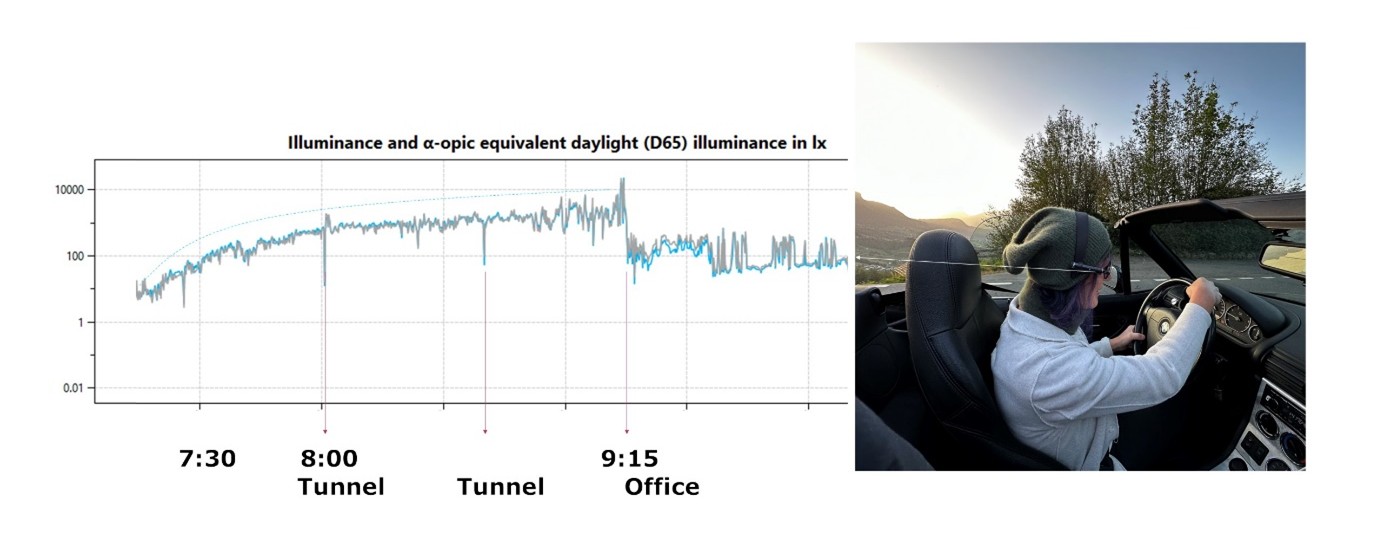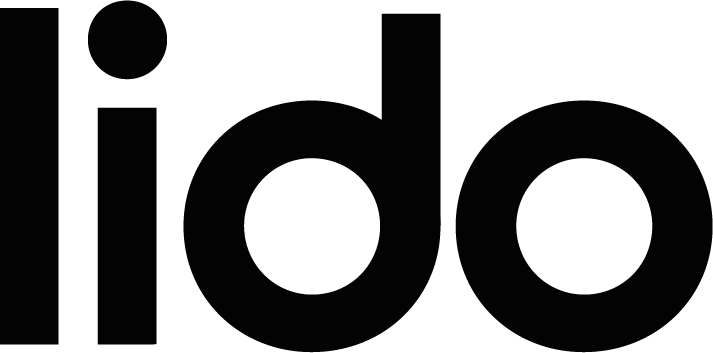RESEARCH
lido – Trusted by leading research institutions
Our lidos have been rented to many prestigious research institutions, universities and industries in Europe and the United States, demonstrating their value as innovative tools for scientific research. Among the esteemed organisations using the lido are MIT, University College Dublin (UCD), University College London (UCL), University of Basel, University of Cambridge, Technical University (TU) Berlin, University of Bergen, TU Ilmenau, Charles University in Prague, TU Munich, TU Vienna, METAS, Swiss Railways, Zumtobel, TU Rosenheim and University Hospital Bochum.
The lido has proven to be a reliable and versatile instrument, providing researchers with accurate and reliable light data. Its use by such a wide range of institutions reflects its ability to support projects ranging from academic research to industrial advancements.

LIGHT EXPOSURE – STUDIES
Global perspectives on light exposure
How does personal light exposure vary in different regions of the world? Our comparative research between Switzerland and Malaysia provides new insights into light exposure and related behaviours. The results not only reveal cultural and environmental differences, but also highlight the physiological relevance of different light patterns. >> Physiologically-relevant light exposure and light behaviour in Switzerland and Malaysia | bioRxiv.
We are also pleased to share our protocol paper detailing the methodology used to assess personal light exposure in Germany, Ghana, the Netherlands, Spain, Sweden and Turkey. This comprehensive study paves the way for cross-cultural analyses of the impact of light on health.
>> Protocol for a prospective, multicentre, cross-sectional cohort study to assess personal light exposure | BMC Public Health
Wearables in chronomedicine: Advancing circadian health research
Wearable technology is transforming chronomedicine by providing deeper insights into circadian health. >> Wearables in Chronomedicine and Interpretation of Circadian Health[v1] | Preprints.org. This study highlights the potential of wearable devices to monitor and analyze circadian rhythms, paving the way for personalized health interventions. >> Human Health, Well-Being and Activity Recognition with Wearable Sensors
Diagnostics | Special Issue
Seasonal challenges and daylight benefits
In Switzerland, the persistent dense fog of autumn and winter often leaves us in a metaphorical ‘limbo’ of reduced daylight. Even under these conditions, natural daylight surpasses indoor office lighting in intensity and quality. Our latest study shows that people with greater exposure to daylight, may be better protected against COVID-19. These findings underscore the health benefits of maximiing daylight exposure. >> Light exposure predicts COVID-19 negative status in young adults | Biological Rhythm Research
Furthermore, in our study using wearable light loggers, we found that people with a history of COVID-19 had poorer circadian light hygiene (smaller 24-hour blue light amplitudes), leading to weaker circadian rhythms, delayed sleep phases and reduced resilience. These findings highlight the importance of optimal light exposure. >> Higher vulnerability to poor circadian light hygiene in individuals with a history of COVID-19 | Chronobiology International
Wearable light loggers and seasonal light sensitivity: Improving the accuracy of research
Light sensitivity varies with seasonal daylight exposure, yet many studies overlook this factor. Failure to account for season and light history can affect the reliability of data. We found that winter studies may overestimate light sensitivity compared to summer. Standardized reporting of season and light exposure history is essential to improve the accuracy of research into the effects of light on circadian rhythms and sleep. >> Seasonal Variation in the Responsiveness of the Melanopsin System to Evening Light: Why We Should Report Season When Collecting Data in Human Sleep and Circadian Studies | clocks & sleep
Stay in shape with light: The link between blue light and metabolic health
Our research shows how blue light exposure, melatonin suppression and metabolic health markers such as BMI are linked, shedding new light on the biological effects of light on human health. In our latest study, >> Blue Light and Temperature Actigraphy Measures Predicting Metabolic Health Are Linked to Melatonin Receptor Polymorphism | biology, we explore how light influences circadian regulation and metabolism – offering exciting possibilities for optimizing health through personalized light exposure strategies.
Advances in light logger technology
Our research shows that measuring melanopic equivalent daylight illuminance (mEDI) using wearable light dosimeters is critical for predicting the non-visual effects of light: >> The Impact of Pupil Constriction on the Relationship Between Melanopic EDI and Melatonin Suppression in Young Adult Males. | Journal of Biological Rhythms
Wearable light loggers are increasingly being utilized for various applications, and this study aimed to systematically analyze their key characteristics and usability. Through a comprehensive survey developed via expert discussions, the study examined device properties, sensor technologies, calibration methods, and applications. Data were collected for 54 wearable light loggers from manufacturer information and publicly available sources, resulting in an overview matrix that detailed factors such as wearing positions, battery life, and sensor performance. The analysis revealed significant variability in design, functionality, and availability among the devices, underscoring the need for standardized practices and better communication between researchers and manufacturers to improve the reliability and usability of wearable light loggers in scientific research. Overview of wearable light loggers: State-of-the-art and outlook | TechRxiv
Entering the tunnel called office
One morning, my colleague picked me up in her vintage convertible, lido-glasses on, as we drove along the winding roads of Switzerland. As we drove, the rising sun drew a beautiful logarithmic curve on our light-logged data, vividly capturing the morning’s illumination. But as we entered the first tunnel, the numbers plummeted, marking the sun’s abrupt absence. The second tunnel deepened the darkness. And then came the third tunnel – our office. Our data showed that light levels in the office were shockingly low, comparable to a road tunnel.
When we extended the research on light exposure and the usability of light loggers to 29 participants, we found that the recommended mEDI of 250 lux was achieved for only 14% of the day. This lack of light not only affects mood, but also overall wellbeing, highlighting the urgent need to improve light exposure in everyday environments.
Our publication, Wearable Light Loggers in Field Conditions: Corneal Light Characteristics, User Compliance, and Acceptance highlights the practicality of lido in the field | clocks & sleep
It’s time to shed light – literally – on the spaces we inhabit.

Looking ahead
By using wearable light loggers, we’ve gained remarkable insights into real-world light exposure. These devices have opened up a new frontier, allowing us to track light levels in real-life conditions and uncover critical trends.
As we deepen our understanding of the role of light in health and behaviour, tools such as lido continue to prove invaluable. From circadian health to metabolic markers, these insights enable us to make informed decisions about light exposure in our daily lives. Stay tuned as we continue to explore the science of light and its profound impact on human health.
PUBLICATIONS
Presentations
- Fachsymposium Licht- und Lebensqualität, Weimar, Deutschland, Lichtdosimetrie: Fact or Fiction, O. Stefani (12./13.10.2023)
- Good Light Group meeting #16 , Online: The luminous landscape of light loggers, O. Stefani (26.9.2023)
- LICHT 2023, Salzburg, Austria: lido – Das Light-Dosimeter zur Erforschung der nicht-visuellen Wirkungen von Licht , B. Schrader (26./29.3.2023)
- DLA Summer School, Lausanne, Switzerland: The Light-Dosimeter – a novel, portable device to record an individual’s light exposure, B. Schrader (15.8.2022)
- Tageslicht-Symposium 2022, Basel, Switzerland: Wie viel Licht erhalten Sie pro Tag?, J. Stampfli (15.6.2021)
- Optica Webinar, Online: Measuring Light, Color, Spectrum and Personalized Light Exposure Using Wearable Light Sensors (11.2.2022)
- Daylight Academy Annual Conference 2021, Online: Light-Dosimeter, J. Stampfli (2.12.2021)
- CIE Midterm Conference 2021, Online: The Light-Dosimeter – A New Device to Help Advance Research on the Non-visual Responses to Light, J. Stampfli (27.9.2021)
- Tageslicht-Symposium 2021, Online: Licht-Dosimeter (17.6.2021)
- Swiss Lighting Forum, Basel, Switzerland: Human Centric Lighting – Hohe Erwartungen wecken reicht nicht aus, B. Schrader (30.1.2020)
- BioWi, Weimar, Germany: Licht-Dosimeter – Aufzeichnung einer ‘Light History’ von Probanden, B. Schrader (12.11.2019)
- EUROSHNET, Dresden, Germany: Light dosimeter – recording an individual’s light history, R. Häfliger (12.6.2019)
- LICHT2018, Davos, Switzerland: Light-Dosimeter 2.0 for Research, B. Schrader (11.9.2018)
- Light & Building, Frankfurt, Germany: HCL-Light-Dosimeter 2.0 – Zur Erfassung der zeitlichen Strahlenexposition von Probanden, B. Schrader (22.3.2018)
Papers
- Stampfli J, Schrader B, di Battista C, et al. The Light-Dosimeter: A new device to help advance research on the non-visual responses to light. Lighting Research & Technology. 2023;55(4-5):474-486. doi:10.1177/14771535221147140
- Stampfli, Janine R.; Schrader, Björn; di Battista, Christian; Häfliger, Reto; Schälli, Othmar; Wichmann, Giselher et al. (2021): The Light-Dosimeter – A New Device to Help Advance Research on the Non-visual Responses to Light. In: CIE Midterm Conference 2021 – Conference Proceedings. DOI: 10.25039/x48.2021.op18.
- ljoh Balajadia, Sophie Garcia, Janine Stampfli, Björn Schrader, Carolina Guidolin, Manuel Spitschan; Usability and Acceptability of a Corneal-Plane α-Opic Light Logger in a 24-h Field Trial. Digit Biomark 29 March 2023; 7 (1): 139–149. doi:10.1159/000531404
- Stampfli, J., Schrader, B., Spitschan, M., & Blattner, P. Light-Dosimeter–Ein neues Gerät zur Erforschung von nicht-visuellen Lichtwirkungen. In 11. Symposium Licht und Gesundheit (p. 120).
Posters
- Society for Light Treatment and Biological Rhythms 33rd Annual Meeting, Manchester, United Kingdom: «Usability and acceptability of corneal-plane α-opic dosimetry in a 24-hour field trial» (23-25.6.2022)
- 11. Symposium «Licht & Gesundheit», Online / Dortmund, Germany: «Light-Dosimeter – Ein neues Gerät zur Erforschung von nicht-visuellen Lichtwirkungen» (26./27.4.2022)
Articles
- LICHT (1/2022): «Das Light-Dosimeter – Portables Gerät zur Erforschung nicht-visueller Lichtwirkungen» (S. 82-83)
- HSLU News & Stories (12/2021): «Das Tageslicht – die grosse Unbekannte»
- Baublatt (14/2021): «Vom Recht auf einen hellen Arbeitsplatz» (S. 8-10)
- WirPlus (4/2021): «Lichtblicke für moderne ‘Höhlenmenschen’ – Es werde Licht im Homeoffice» (S. 18-21)
- LICHT (4/2019): «Auf- und Umbruchstimmung in der Lichtforschung» (S. 80-81)
CONTACT
Lucerne University of Applied Sciences and Arts
School of Engineering and Architecture
Technikumstrasse 21
6048 Horw
Switzerland
